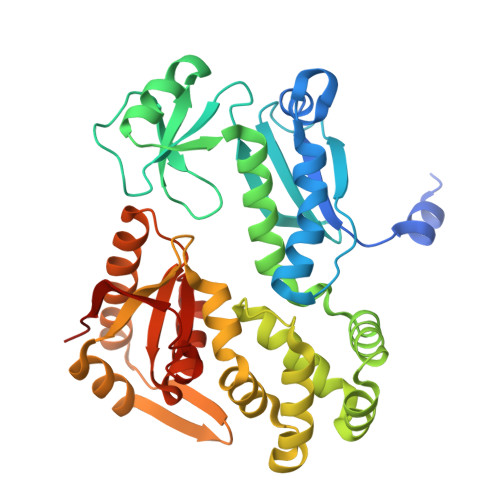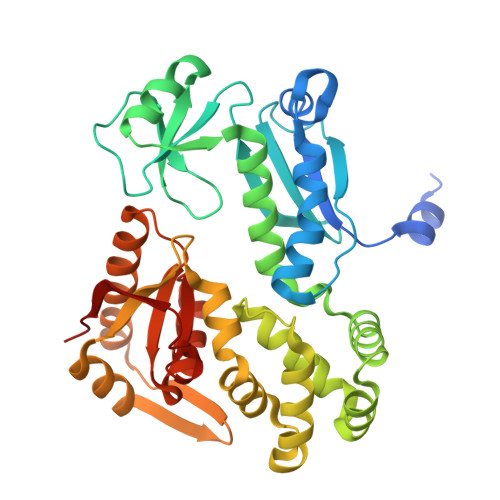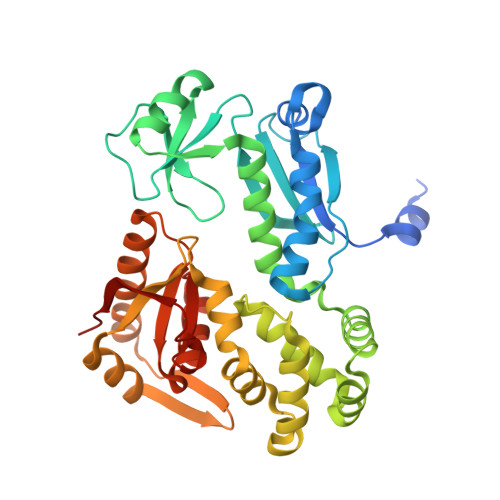Structure of the cytoplasmic domain of the flagellar secretion apparatus component FlhA from Helicobacter pylori.
Moore, S.A., Jia, Y.(2010) J Biological Chem 285: 21060-21069
- PubMed: 20442410
- DOI: https://doi.org/10.1074/jbc.M110.119412
- Primary Citation of Related Structures:
3MYD - PubMed Abstract:
Using x-ray crystallography we have determined the structure of the cytoplasmic fragment (residues 384-732) of the flagellum secretion system protein FlhA from Helicobacter pylori at 2.4-A resolution (r = 0.224; R(free) = 0.263). FlhA proteins and their type III secretion homologues contain an N-terminal integral membrane domain (residues 1-350), a linker segment, and a globular C-terminal cytoplasmic region. The tertiary structure of the cytoplasmic fragment contains a thioredoxin-like domain, an RNA recognition motif-like domain inserted within the thioredoxin-fold, a helical domain, and a C-terminal beta/alpha domain. Inter-domain contacts are extensive and the H. pylori FlhA structure appears to be in a closed conformation where the C-terminal domain closes against the RNA recognition motif-fold domain. Highly conserved surface residues in FlhA proteins are concentrated on a narrow surface strip comprising the thioredoxin-like and helical domains, possibly close to the export channel opening. The conformation of the FlhA N-terminal linker segment suggests a likely orientation for the FlhA cytoplasmic fragment relative to the membrane-embedded export pore. Comparison with the recently published structures of the Salmonella FlhA cytoplasmic fragment and its type III secretion counterpart InvA highlight a conformational change where the C-terminal beta/alpha domain in H. pylori FlhA moves 15 A relative to Salmonella FlhA. The conformational change is complex but primarily involves hinge-like movements of the helical and C-terminal domains. Interpretation of previous mutational screens suggest that the C-terminal domain of FlhA(C) plays a regulatory role in substrate class switching in flagellum export.
Organizational Affiliation:
Department of Biochemistry, University of Saskatchewan, Saskatoon, Saskatchewan S7N 5E5, Canada. stan.moore@usask.ca
















